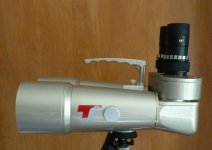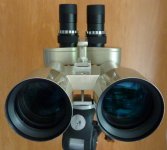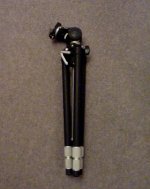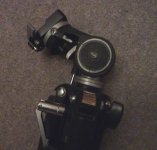JerryLogan
Well-known member
Hi Steve,
I found a scope hard to get on with, so I bought an TS Optics big 18 x 70mm angled EP semi APO binocular, for tripod use, it takes 1.25" EPs up to 50x max, pleased with it for distance viewing, I find it is much better than a scope using 2 eyes, but for me having an angled EP, is essential, straight is far too uncomfortable. I have found about 25x to 30x EPs best, Photo here. I got mine for a good deal, £640 from Germany, but the Helios quantum 88mm that microglobe sell is similar, likely slightly better, and probably made in the same place.
Ben
Ben,
Can you post a photo or two of your mount for those binoculars? It looks very interesting.
Thanks and best,
Jerry










